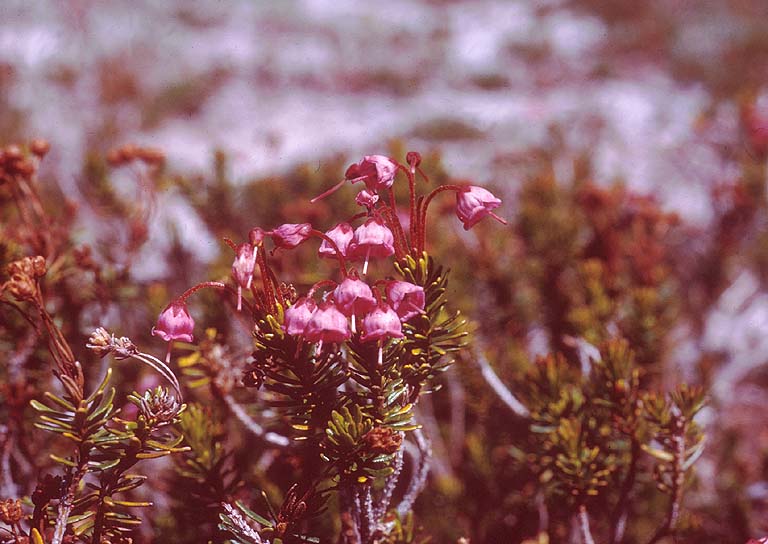Plant Data Sheet
Red Heather, Phyllodoce
empetriformis

(Franklin
and Dyrness, 1988)
Local occurrence:
Common
within subalpine habitat
Habitat preferences:
Moist, moderately well drained to well drained slopes.
Open high elevation forests or subalpine meadows with moderately late lying snowpack
(Franklin
and Dyrness, 1988)
Plant strategy type/successional stage:
Stress
tolerator
Associated species
Cuttings: in late summer or fall
Collection restrictions or guidelines:
Seed is ripe when capsule swells and becomes dark purple or black
Clip
entire inflorescence
(Potash and Aubry, 1997)
Seed germination:
Recommended seed storage conditions:
The following protocol for cuttings is from, Olympic National Park in Potash and Aubry, (1997):
Slice 1/8" off base of 3-5" cutting
Remove leaves within 1/2 " of basal end and keep cuttings in bucket of cold water
Make a solution of 1 tablespoon "Dip 'n Grow : 1 quart water
Suspend basal end of cuttings in solution and soak for 24 to 72 hours
Use 10 x 20" flats with 3 part fine sphagnum, 3 part horticultural perlite and 1 part #4 washed sand.
50 cuttings per flat
Place on mist bench with bottom heat at 55-65 °F in winter and 65°Fin spring/summer
Shade from full sun
Fertilize every 2 weeks with 9-45-15 plant starter diluted to 1/2 strength and Maxicrop liquid kelp at 1/4 recommended strength
Transplant to shallow pots after 3-4 months or when roots fill-out flat
The following additional notes come from Glacier National Park in Luna et al (2001)
Better results from stem heel semi-hardwood cuttings than stem tip semi-hardwood cuttings, higher rooting and higher vigor
8,000 PPM IBA is recommended
1:1 peat/perlite rooting media with soil from stock plant site used for mycorrhizal innoculum
10 weeks in rooting flats, transplanted to 800 ml containers with 6:1:1 sphagnum peat: perlite:vermiculite
Hardened in full sun and overwintered
Out planted 2 years after collection of cuttings
Soil or medium requirements:
See details above
Installation form:
800 ml containers (Luna et al. 2001)
Recommended planting density:
Care requirements after installed:
Water once daily first summer following transplanting into containers (Luna et al. 2001, Potash and Aubry, 1997)
Sources cited
Matthew
Ramsay, April 21, 2003